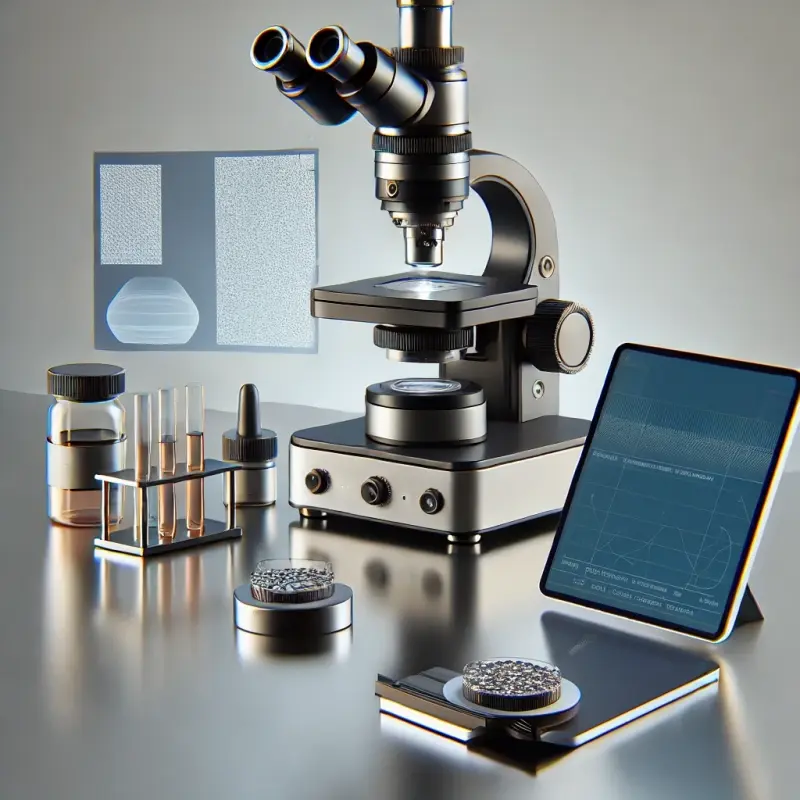Rare Devices for Studying Material Interactions: Advancing Design with Technology
Introduction
The interaction between materials is a cornerstone of innovation in engineering, product development, and architecture. Understanding these interactions at a microscopic or atomic level enables researchers to design stronger, more efficient, and aesthetically pleasing products. While traditional tools have served researchers well, rare and advanced devices have emerged, revolutionizing material studies and design processes.
This article delves into these extraordinary tools and highlights how their technological advancements are shaping modern design and engineering practices.

Exploring Rare Devices for Material Interaction Research
1. Nanoindentation Systems
What They Do: Nanoindentation systems are precision tools used to measure a material's mechanical properties at the nanoscale. By pressing a sharp probe into the material’s surface, these systems provide insights into hardness, elasticity, and other critical characteristics.
How They Innovate Design:
- Material Optimization: Designers can identify the best materials for applications requiring strength and durability.
- Microscopic Insights: The system allows researchers to see how materials respond under stress, enabling the creation of composites and hybrid materials for specific uses.
2. Scanning Electron Microscopes (SEMs) with EDS
What They Do: SEMs combined with Energy Dispersive Spectroscopy (EDS) allow for a detailed visualization of material surfaces and their chemical composition.
Applications in Design:
- Surface Finish Improvement: SEMs help assess surface defects and refine manufacturing techniques.
- Material Compatibility: By analyzing compositions, researchers can select materials that work synergistically.
3. Atomic Force Microscopes (AFM)
What They Do: AFMs use a cantilever with a sharp tip to scan material surfaces at an atomic level.
Key Design Contributions:
- Texture Mapping: AFMs can create 3D maps of a material’s surface, aiding in tactile and visual design considerations.
- Nanotechnology Integration: They help integrate nanoscale coatings and features, opening new possibilities in electronics and medical devices.
Advanced Software Integration: The Game-Changer
Many of these devices rely on sophisticated software to interpret data and provide actionable insights. Tools powered by AI and machine learning accelerate analysis, enabling faster iterations in design.
Key Features of Integrated Software:
- Data Visualization: Converts raw data into user-friendly graphs and simulations.
- Predictive Modeling: Offers insights into how material changes will impact designs under various conditions.
- Real-Time Feedback: Some devices now feature IoT integration, allowing researchers to monitor results remotely.
Case Studies: Technology Meets Design
Sustainable Packaging Design
By using nanoindentation and SEMs, researchers discovered a biodegradable composite material with high durability, leading to a groundbreaking packaging solution.
Lightweight Automotive Frames
Atomic force microscopy played a pivotal role in the creation of lightweight, yet strong, carbon-fiber frames, optimizing fuel efficiency without compromising safety.
Future of Rare Devices in Material Research
Emerging Trends
- Automation: Devices equipped with robotic arms are reducing human error and speeding up research.
- Multifunctionality: Future tools are being designed to combine testing methods, providing comprehensive insights in a single run.
- Sustainability-Focused Research: New devices will prioritize materials that reduce environmental impact.
Challenges
- Accessibility: Rare devices remain expensive and require skilled operators, limiting their reach.
- Data Overload: The vast amount of data generated can be overwhelming without proper tools for analysis.
The Role of Collaboration in Advancing Material Interaction Studies
Innovation in material research thrives at the intersection of diverse disciplines. Collaboration between engineers, material scientists, designers, and software developers has amplified the effectiveness of rare devices.
Interdisciplinary Contributions
- Engineers: Define practical constraints and performance requirements, ensuring that material properties align with real-world applications.
- Material Scientists: Offer foundational knowledge about the interactions and behaviors of different materials.
- Designers: Bring creativity and usability to the table, ensuring that innovations meet user needs.
- Software Developers: Build intuitive interfaces and algorithms for data interpretation, bridging the gap between raw research and actionable insights.
Example: A collaborative project involving advanced Atomic Force Microscopes (AFMs) led to the development of scratch-resistant smartphone screens. Engineers provided stress-resistance criteria, while designers ensured the glass maintained aesthetic appeal, resulting in both durable and visually stunning products.
Educational Integration of Rare Devices
To ensure sustained innovation, these tools are increasingly being introduced into academic and research institutions.
Benefits of Early Exposure
- Skill Development: Students and researchers gain hands-on experience with cutting-edge equipment.
- Research Innovation: Access to rare devices enables the exploration of novel material combinations and designs.
- Industry Preparedness: Graduates with experience using these tools are better equipped to address real-world challenges.
Notable Initiatives
Several universities now partner with technology companies to create specialized labs. For instance, joint ventures in materials research labs have equipped institutions with nanoindentation and spectroscopy systems, fostering groundbreaking studies in biomaterials and lightweight composites.
Accessibility and Democratization of Advanced Tools
While rare devices have historically been confined to well-funded labs and corporations, recent advancements are making them more accessible.
Key Drivers of Accessibility
- Miniaturization: Smaller, portable versions of advanced tools reduce costs without compromising performance.
- Cloud Integration: Cloud-based software allows smaller labs to process and analyze data without the need for expensive local systems.
- Open-Source Technology: Some organizations are developing open-source tools for basic material studies, paving the way for affordable research.
Rare and advanced devices for studying material interactions are not just tools; they are enablers of creativity and innovation. They bridge the gap between research and application, allowing designers to push boundaries. As these technologies become more accessible and integrated with AI, the possibilities for groundbreaking designs will continue to expand.
Whether in aerospace, consumer electronics, or architecture, the insights offered by these tools underscore the profound impact of material research on modern design. Embracing these technologies today ensures a future where innovation knows no bounds.
Artykuły
Zapisz się do naszych powiadomień, aby otrzymywać najnowsze i najciekawsze artykuły bezpośrednio na swoją skrzynkę odbiorczą!